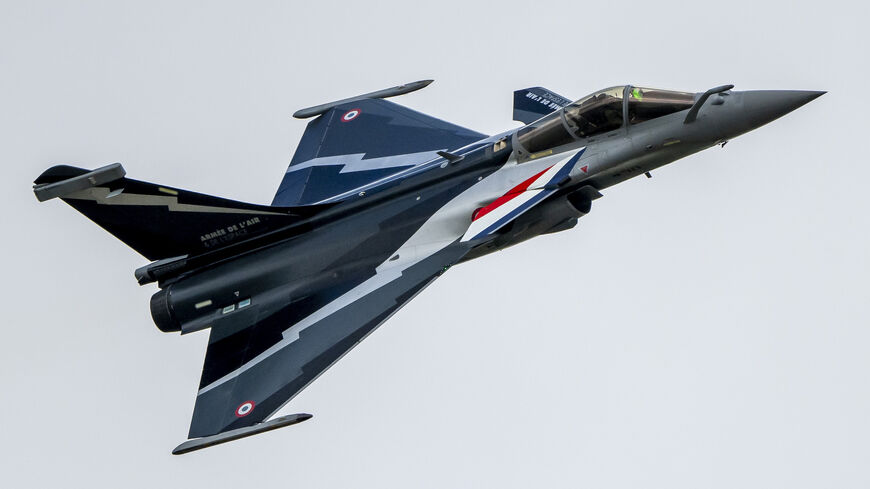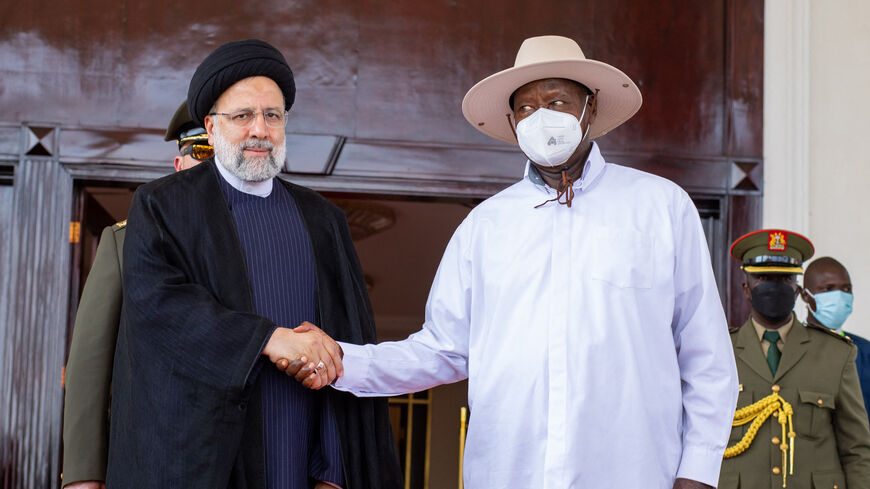Long-term transport growth bodes well for Middle East airlines, airports as competition intensifies
Al-Monitor Pro Members
Afshin Molavi
Senior Fellow, Johns Hopkins School of Advanced International Studies
Aug. 30, 2022
Global air transport is well-positioned for long-term growth over the next two decades, according to recent UN and industry forecasts. The leading Middle East and North Africa airlines and airports will be well-positioned to ride this wave. Located strategically between East and West and near rising air travel populations in South Asia and large swathes of Africa, the "Big Three" aviation country powerhouses — the United Arab Emirates, Qatar and Turkey — will continue to grow while facing deepening competition from an ambitious Saudi Arabia. Meanwhile, low-cost carriers will continue their rise and the competition for increasingly lucrative air cargo dollars will intensify.
- Global air travel, devastated by the COVID pandemic, has been recovering robustly. A new 20-year forecast by Airbus suggests a possible return to pre-pandemic levels of travel by 2023. The 20-year outlook is strong: 3.6% annual passenger growth and 3.2% freight growth. By 2040, the world could see some 7.8 billion passengers annually.
- A new International Air Transport Association (IATA) report noted that air passenger demand will reach 79.1% of pre-COVID levels this year. The IATA forecasts pre-COVID travel levels to return by 2024. Over a 20-year period, the airlines industry body sees the Middle East region as the second fastest growing air passenger market, after the Asia-Pacific.
- Middle East airlines (not including North Africa) are expected to post a $1.9 billion loss in 2022, according to the IATA. This represents a strong recovery from a $4.7 billion loss in 2021. The Big Three regional airlines — Emirates Airline, Qatar Airways and Turkish Airlines — continue to sit atop top 10 lists of the busiest global airlines in terms of passengers and cargo.
- The regional Big Three plus Abu Dhabi-based Etihad Airways (considered part of the Gulf Big Three) recently ranked in the top 20 of the world’s best airlines for 2022, according to the well-regarded airlineratings.com. Qatar Airways was ranked as the world’s best airline. Etihad was ranked third, and Turkish and Emirates were ninth and 16th, respectively. Etihad ranks highest on sustainability indexes.
- Dubai International Airport (DXB) continues to stay atop the rankings of the busiest international airports, with Istanbul and Doha in the top 10, according to OAG. All three airports remain engaged in intense competition for major long-haul routes.
- In line with Saudi Arabia’s Vision 2030 plan, the kingdom has announced an ambitious $100 billion aviation plan that aims to carry more than 330 million passengers annually (both domestic and international), transport 5 million tons of freight and establish air links to more than 250 destinations worldwide. Saudi Minister of Transport Saleh Al-Jasser said recently that the kingdom aims to be “the Middle East’s leading aviation hub.”
- World trade is forecast to double by 2041, creating opportunities for rapid cargo growth. Qatar Airways excelled in cargo in 2021, ranking as the second busiest cargo carrier in the world after FedEx and ahead of UPS. Emirates was fourth and Turkish Airlines sixth. Saudi Arabia will emerge as a rising player in this market over the next decade.
- In line with global trends, low-cost carriers (LCCs) are firmly established across the region, growing their footprint. Just before COVID hit, LCCs accounted for some 16.5% of total traffic, considerably lower than the 50%+ share in Southeast Asia or the 30%+ in Asia-Pacific. This suggests room for rapid growth.
- New entrants Whizz Air Abu Dhabi and Air Arabia Abu Dhabi will continue to fight for the budget traveler with established players flydubai, Sharjah-based Air Arabia and Riyadh-based Flynas.
- The major North African carriers — EgyptAir, Royal Air Maroc and Air Algerie — are well-positioned to grow their Africa networks, though Ethiopian Airlines has proven to be the most nimble carrier across the continent. Turkish Airlines and Emirates also pose competition. A new air “scramble for Africa” will mark the next decade.
Scenario 1: Global recession slows air travel demand, creating a race to the bottom, pinching profits and slowing new investment. This is less likely. Air travel has demonstrated remarkable resilience throughout economic cycles and downturns. Despite seemingly catastrophic events like the 9/11 terrorist attacks and the 2008-09 global financial crisis, air travel has continued its steady march. Only a pandemic that physically shuts down air travel could threaten the steady growth of air travel and cargo. What’s more, several Gulf Arab states — notably Saudi Arabia — are flush with oil revenues. They are likely to continue investing in an air transport sector that has paid strong returns. Saudi Arabia’s rising air footprint will certainly pose a challenge, but the Big Three aviation country powerhouses — UAE, Qatar and Turkey — have strong first mover advantages in place and nimble regulators and state-owned carriers to meet the challenge.
Scenario 2: A combination of new COVID variants and carbon emissions regulations could pinch growth further, deter investment and create a new climate of volatility. This is also less likely. Next-generation aircraft from the leading suppliers — Boeing, Airbus and Embraer — are cleaner and emit less carbon. This is partly why emissions per seat miles are down nearly 6% since January 2018, according to IBA. Etihad Airways has been a global leader in the search for sustainable aviation fuels, and the other major carriers have followed suit. While new COVID variants can certainly hit future air traffic growth, we are unlikely to see mass shutdowns of airports and airlines again. Once China begins to open again, the game changes entirely and air traffic numbers pick up dramatically.
The Middle East and North Africa region has enviable aero-geography. Strategically located along major travel corridors between East and West and near rising middle-class populations in South Asia and Africa, the region is well-positioned to ride the steady wave of forecasted travel and air cargo growth over the next two decades. With nimble regulators and state-owned carriers, the Big Three aviation country powerhouses will face new competition from a rising Saudi Arabia while continuing to compete ferociously with each other. Planned airport investments across the region will substantially raise capacity. The leading North African carriers will benefit from their large domestic market, mature European markets and growth in air travel in sub-Saharan Africa. Low-cost carriers will both challenge and complement legacy carriers, and we can expect LCCs to take a bigger share of the regional travel market. Fierce competition will be the norm and push carriers and airports to innovate. The most nimble and innovative will prosper.
Afshin Molavi has nearly 25 years of experience covering the geo-economics of the Middle East and North Africa and broader emerging markets with postings in Riyadh, Jeddah, Dubai, Tehran and elsewhere. Currently a senior fellow at the Johns Hopkins School of Advanced International Studies in Washington, he has also held various research, reporting, analyst and leadership roles at Reuters, Oxford Analytica, the International Finance Corporation of the World Bank, emerge85 and the New America Foundation. His articles have also appeared in Bloomberg, the Financial Times, the Washington Post and the Journal of Commerce, and he is the founding editor of Emerging World, a Substack newsletter that explores the intersection of emerging markets, globalization and the key global trends shaping our future.
We're glad you're interested in this memo.
Memos are one of several features available only to PRO Expert members. Become a member to read the full memos and get access to all exclusive PRO content.

Already a Member? Sign in
The Middle East's Best Newsletters
Join over 50,000 readers who access our journalists dedicated newsletters, covering the top political, security, business and tech issues across the region each week.
Delivered straight to your inbox.
Free
What's included:
Free newsletters available:
- The Takeaway & Week in Review
- Middle East Minute (AM)
- Daily Briefing (PM)
- Business & Tech Briefing
- Security Briefing
- Gulf Briefing
- Israel Briefing
- Palestine Briefing
- Turkey Briefing
- Iraq Briefing
Premium Membership
Join the Middle East's most notable experts for premium memos, trend reports, live video Q&A, and intimate in-person events, each detailing exclusive insights on business and geopolitical trends shaping the region.
$25.00 / month
billed annually
$31.00 / month
billed monthly
What's included:
Memos - premium analytical writing: actionable insights on markets and geopolitics.
Live Video Q&A - Hear from our top journalists and regional experts.
Special Events - Intimate in-person events with business & political VIPs.
Trend Reports - Deep dive analysis on market updates.
We also offer team plans. Please send an email to pro.support@al-monitor.com and we'll onboard your team.
Already a Member? Sign in







